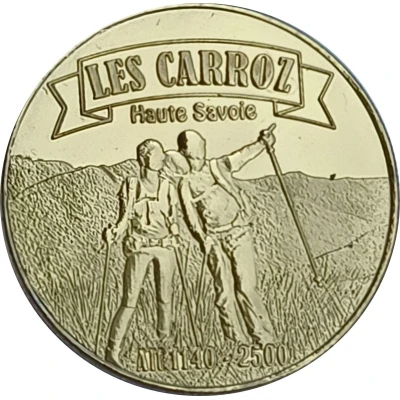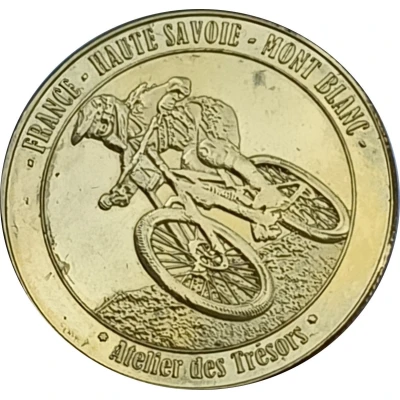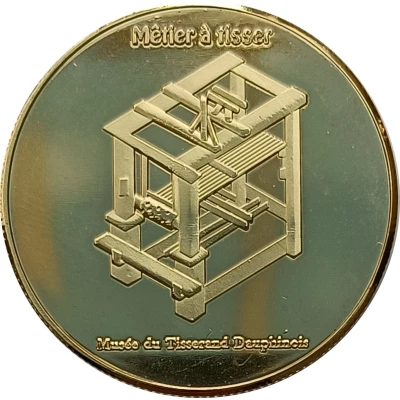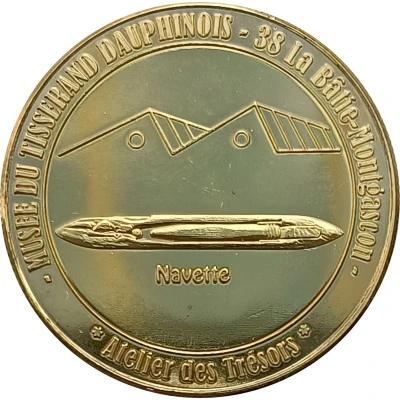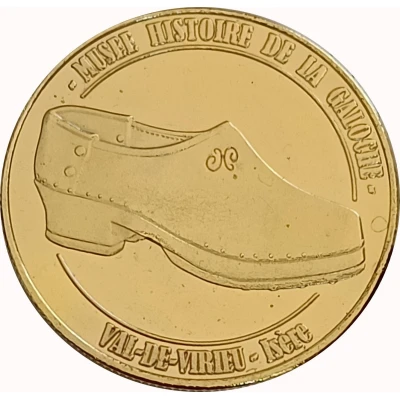
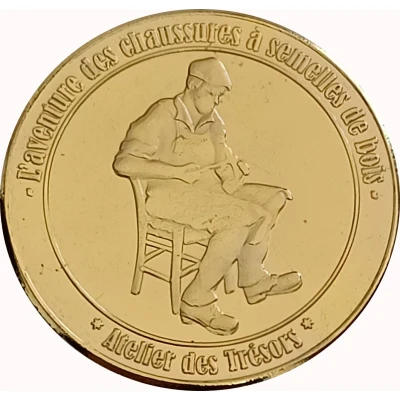

Jeton touristique - Atelier des Trésors - Isère - Val-de-Virieu - Musée, histoire de la Galoche ND
| Zamak | 13.04 g | 33.8 mm |
| Location | France |
|---|---|
| Issuing entity | Atelier des Trésors |
| Type | Medals › Souvenir medallions |
| Composition | Zamak |
| Weight | 13.04 g |
| Diameter | 33.8 mm |
| Thickness | 2.1 mm |
| Shape | Round |
| Technique | Milled |
| Orientation | Medal alignment ↑↑ |
| Updated | 2024-11-12 |
| Numista | N#355582 |
|---|---|
| Rarity index | 97% |
Reverse
Representation of a seated craftsman making a galoche.
Script: Latin
Lettering:
- L'aventure des chaussures à semelles de bois -
🟌 Atelier des trésors 🟌
Edge
Reeded
Comment
But what is a galoche?
Galoches are shoes made up of a wooden sole known as the "galochon" or "galoche wood", with a peripheral rebate above it, known as the "fouillure", for inserting the leather upper part known as the "upper". The whole assembly is nailed together.
The origins of Galoshes go back to the time of our ancestors, the Gauls.
Galoshes, in a form similar to the one we know today, were already used by the Gauls under the name "gallica" and by the Romans under the name "caliges". According to the monk Saint Gal, author of "A Life of Charlemagne", the emperor appreciated these shoes. Bernard, his grandson and King of Italy, also wore them. In 1639, when his tomb was opened, red leather shoes with wooden soles were discovered intact. In the collective memory, the clog is better known and recognized. They play an important role in the history of footwear. But it's important to remember that the clog, a carved piece of wood, was more commonly used on the plains, as opposed to galoshes, which were more common in hilly and mountainous regions. We can therefore better understand the importance of these shoes in the Rhône-Alpes region and in the Isère département. https://www.museedelagaloche.fr/histoire/histoire-de-la-galoche
